Natural Sciences
Emergence of a Viral Disease Epidemic of Sweet potato in Eastern Africa is Imminent – Plant virologists warn
Published
2 years agoon
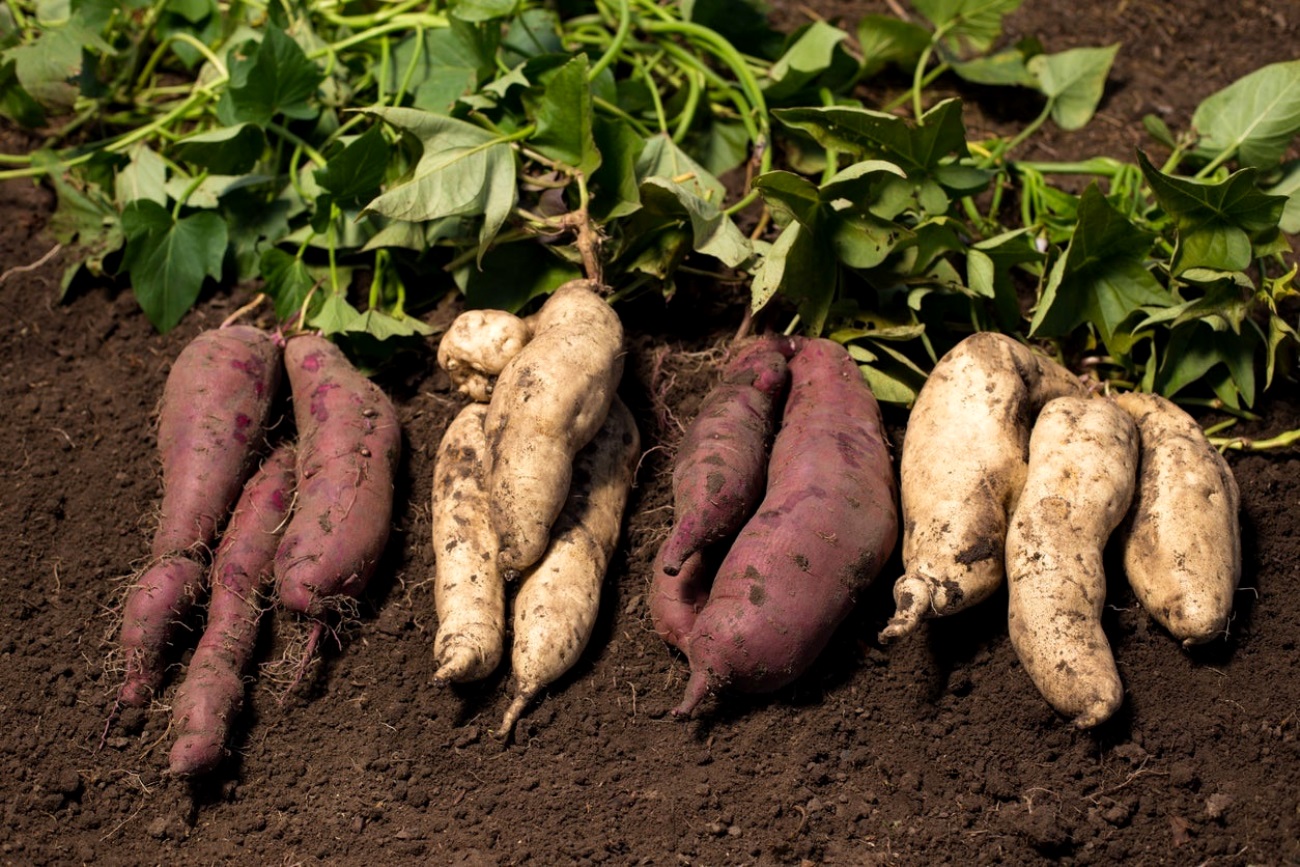
When COVID-19 emerged in 2019, it first remained temporarily localized as an epidemic in Huan China until it broke Chinese national and Asian continental borders attaining a global pandemic status. With COVID-19 and other epidemics and/or pandemics of humans and livestock, it is easier to explain the obvious impact on humans and/or livestock.
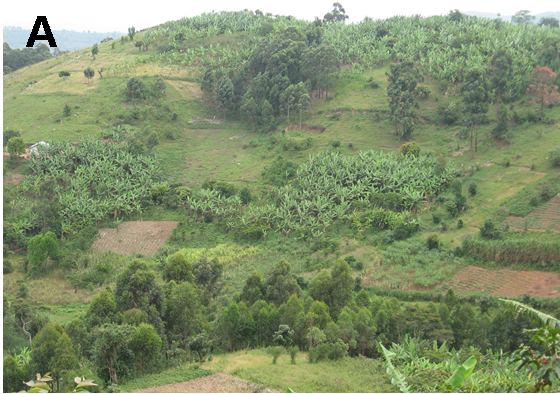
What about virus epidemics and pandemics that affect plants?
Virus epidemics and pandemics that affect plants cause significant disruptions in food production. In fact, the emergence and re-emergence of extremely dangerous plant viruses is the major pain to the 21st century agriculture and sustainable food production.
Viral diseases of plants lead to complex outcomes of food shortages, economic meltdown and loss of lives especially when the affected crop plants are central to the economics and livelihoods of the people. Think of what would happen if an epidemic caused significant effect or eliminated crops like maize, banana, cassava or sweetpotato from sub-Saharan Africa.
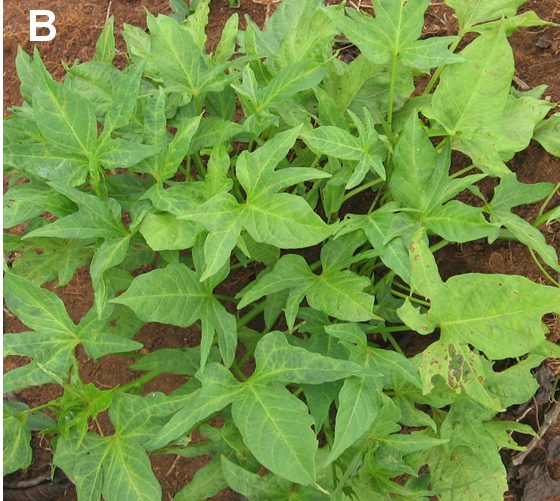
Most viruses affecting livestock and humans are spread and transmitted by means of physical contact between hosts. Furthermore, human and livestock hosts are mobile. On the other hand, plants do not move and must thus depend on other agents (vectors) for the spread of viruses between hosts. Consequently, over 98% of plant viruses are transmitted by vectors. These vectors may include arthropods (especially insects), nematodes, fungi, and parasitic plants. In plants, a virus disease epidemic becomes optimized by the ability of vectors facilitating fast spread of the virus in an agro-ecosystem.
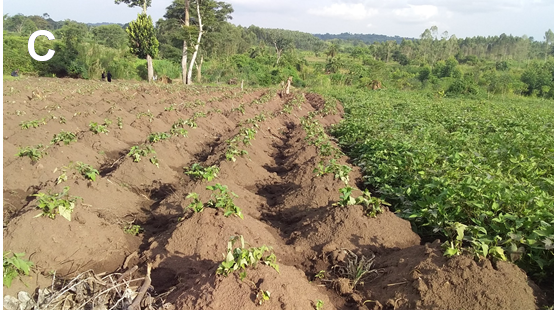
New study predicts emergence of disease epidemic in sweetpotato
A new study led by Prof. Arthur Tugume at the Department of Plant Sciences, Microbiology and Biotechnology in the College of Natural Sciences at Makerere University predicts potential of emergence of a new disease epidemic in sweetpotato.
The study recognizes that by default, viruses are not constrained to perpetually occupy a single ecological niche. This is because viruses have inherent genetic and evolutionary abilities that enable their acquisition of better fitness to always expand their host and geographical ranges.
While viruses enjoy such fitness advantages in nature, the current study points out unique examples where some viruses in eastern Africa behave awkwardly. These viruses first hid under the guise of being less important and seemingly of no impact in cropping systems, and all of a sudden hell broke loose and the entire farming system was caught unaware.
The study titled; “Endemism and reemergence potential of the ipomovirus Sweetpotato mild mottle virus (family Potyviridae) in Eastern Africa: half a century of mystery” shows that a virus, named Sweetpotato mild mottle virus (SPMMV) was first detected in eastern Africa in the 1970’s. SPMMV is currently the third most prevalent virus of sweepotato in the region and is most destructive in mixed infections with other viruses. Very strangely, SPMMV is geographically restricted to eastern Africa (confirmed only in Uganda, Kenya and Tanzania). This sharply contradicts other known sweetpotato viruses that occur globally wherever sweetpotato is grown.
According to Dr. Deusdedith Mbanzibwa a co-author and Head of Disease Control Unit at Tanzanian Agricultural Research Institute, “it is a half-century-old mystery how SPMMV remains localized in East Africa while other viruses on sweetpotato show a global incidence.” Dr. Mbanzibwa adds, “it is important we generate basic information on this virus as soon as possible such that immediately an epidemic explodes we can counter-it based on the information we have as opposed to being caught unaware of the destructive effects of an epidemic.”

Why should we be concerned about outbreak of an epidemic on sweetpotato?
Plant disease epidemics cause a breakdown in food production and availability in communities that depend on the affected plants as food staples. If sweetpotato production breaks down, it directly translates into limited food supplies in local communities that depend on it for food.
According to Dr. Titus Alicai, a senior virologist and co-author based at the National Crops Resources Research Institute (NaCRRI), Namulonge Uganda, “between the 1980’s-1990’s, a devastating viral pandemic (cassava mosaic disease, CMD) destroyed cassava cropping systems in eastern Africa. As a result, dozens of lives were lost because many communities solely depended on cassava for food and income”. Although these viruses had been detected in the region as early as 1800’s, it was not until the 1980s that destructive effects of the disease became apparent.
Dr. Alicai adds that, “when cassava got destroyed by CMD, sweetpotato became an immediate alternative to millions of hungry people, but now sweetpotato is also burdened with diseases arising from viruses.” Despite heavy investments in disease control in cassava, the CMD pandemic is not completely controlled.
Why is eastern Africa important with respect to emergence of plant viruses?
According to this study, SPMMV is not the first unique virus to emerge or reemerge in eastern Africa. An earlier study by Prof. Tugume and colleagues published in 2010 in Molecular Ecology showed that East Africa is a hotspot for the evolutionary diversification of yet another virus in sweetpotato, named Sweetpotato feathery mottle virus (SPFMV).
Many studies show this region as the home of epidemics in rice caused by Rice yellow mottle virus (RYMV). Highly lethal strains of Cassava mosaic geminiviruses (CMGs) causing CMD initiated this epidemic from eastern Africa. Unique strains of Sweetpotato chlorotic stunt virus (SPCSV) are incident in eastern Africa. SPCSV is unique because it almost indiscriminately enhances the viral concentrations of other co-infecting viruses in sweetpotato. The list of damaging plant viruses or their strains that have emerged from eastern African region is long and cannot not be exhausted here.
Biologists studying diversity of plants and animals have also coded eastern Africa as a home of the “hottest hotspot of biodiversity” of endemic land plants and animals located in Eastern Arc Mountains of Kenya and Tanzania. The features of eastern African ecosystem that incite virus epidemics in plants are not fully known. However, it is suspected that the microclimatic changes as modulated by the Indian Ocean dipole could be one of the drivers of virus emergence and reemergence in the region.
Emergence of SPMMV in sweetpotato closely resemble that of viruses in cassava
The current study specifically compared SPMMV with two viruses infecting cassava: cassava brown streak virus, and Ugandan cassava brown streak virus, collectively called cassava brown streak ipomoviruses (CBSIs).
CBSIs first appeared in the 1930’s in coastal east Africa but went completely silent for about 70 years and then suddenly re-emerged in late 1990’s-mid 2000’s to what is today the single largest threat to cassava production in Africa. CBSIs cause a disease called “cassava brown streak disease” (CBSD). Between 1930’s-1990’s, the CBSIs were able to “amass ability” to cause untold suffering of cassava cropping from 2000’s to-date.
Similarly, since the 1970’s when SPMMV was first reported in the region, the virus has been “amassing an ability” to cause more disease in sweetpotato. This is implied directly by evidence of positive selection found in its genes. Positive selection refers to “survival for the fittest” in Charles Darwin’s terms to mean that, individual virus particles in the SPMMV population are becoming more and more highly efficient in causing disease. Today, half a century later, one can argue that it is about time that the SPMMV will incite a new disease.
Note that both SPMMV and CBSIs belong to the same taxonomic grouping of plant viruses in a genus called “Ipomovirus”, and family called “Potyviridae” which is the largest family of plant viruses with RNA genomes. Hence, similarities in the disease spread between SPMMV and CBSIs are not unexpected.
Expert guide to sweetpotato virology research for preparations against the epidemic
“If we can generate advance basic scientific information concerning how the SPMMV infects sweetpotato plants, how it is transmitted by vectors between plants, and circumstances fostering field spread of the virus, we will be better prepared to handle an epidemic that may arise from the virus,” Prof. Tugume states.
He adds: “we should be able to undertake these studies quickly because SPMMV is naturally incident on sweetpotatoes in Uganda, Kenya and Tanzania in levels causing less damage on its own at the moment, although this damage escalates when the virus occurs in multiple infections.”
The co-authors highlight serious research gaps for critical research investment in sweetpotato virology. Vector transmission is such an important aspect of virus disease epidemics of plants. Therefore, this study has proposed three possible explanations to account for the virus-vector and virus-host relationships of SPMMV. These are called hypothesis #1, #2, and #3, built in a fashion that allows experimentation to prove them right or wrong:
- Hypothesis #1: “SPMMV is opportunistically aphid-transmitted with potyvirus SPFMV as a helper virus.” This hypothesis postulates that SPMMV is transmitted by “chance” by a group of insects called aphids but this happens when SPMMV co-infects sweetpotatoes with another virus, SPFMV that is transmitted efficiently by aphids.
- Hypothesis #2: “Vector-mediated transmission of SPMMV is modulated by synergism with SPCSV.” Under this hypothesis, the concentrations of SPMMV in plant tissues increases when it co-infects with another virus, SPCSV, and this increases chances of SPMMV being picked by insects for transmission to other plants.
- Hypothesis #3: “SPMMV tropism and histo-localization changes upon co-infection with SPCSV.” How much viral concentration is found in different plant tissues can change depending on which tissues that are preferred by the virus. Certain plant viruses prefer to stay and multiply from certain tissues than others.
Dr. Alicai said, “If we can determine vector transmission dynamics including the actual vector(s) transmitting SPMMV, which plant tissues the virus prefers for its multiplication, and generate many complete sequences of SPMMV genomes, we will be better prepared for epidemics arising from the emergence of SPMMV”.
Sweetpotato is a vegetatively propagated plant in which the top-most 15-40cm part of the plant is used for initiating the new crop, a practice that is the main route of accelerated of virus spread in the cropping system. Also, insects especially aphids and whiteflies are the major vectors transmitting viruses in sweetpotato. The research gaps highlighted with respect to SPMMV require urgent attention for advance preparation in case an epidemic breaks loose on the sweetpotato cropping system.
This study has been published by the American Phytopathological Society (APS) in an open access journal, “Phytobiomes Journal”, and is freely accessible on https://apsjournals.apsnet.org/doi/10.1094/PBIOMES-05-22-0031-RVW
For more details, please contact;
Prof. Arthur Tugume
Lead Scientist
Department of Plant Sciences, Microbiology and Biotechnology
College of Natural Sciences (CoNAS)
Makerere University
Email: arthur.tugume@mak.ac.ug
Tel: +256772514841
Dr. Deusdedith Mbanzibwa
Tanzania Agricultural Research Institute (TARI),
Biosciences Centre, Dodoma, Tanzania
Email: d.mbanzibwa@yahoo.co.uk
Email: Tel: +255755881758
Dr. Titus Alicai
Root Crops Research Program
National Crops Resources Research Institute (NaCRRI)
National Agricultural Research Organization (NARO)
Email: talicai@hotmail.com
Tel: +256772970585
Hasifa Kabejja
Principal Communication Officer
College of Natural Sciences
Makerere University
Email: pr.cns@mak.ac.ug
Tel: +256774904211
You may like
-
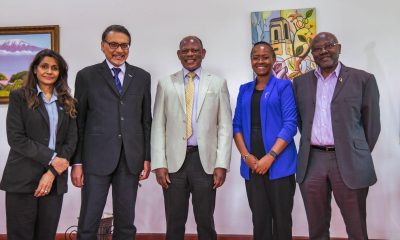

Strengthening South-South Academic Partnerships: Makerere University and Binary University Chart a Strategic Path for Innovation, Entrepreneurship and Women’s Leadership
-
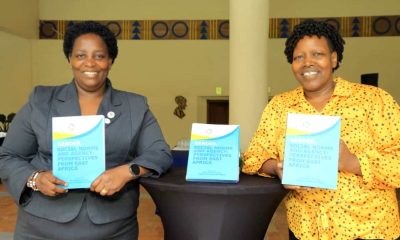

Makerere University Press launches a Groundbreaking Book “Gender, Social Norms and Agency: Perspectives from East Africa,” Sparking a New Era of Collaborative Action for Gender Equality in the Region
-


Makerere University and Partners Celebrate INSSPIRE Project Achievements in Evidence-Based Higher Education on Food Systems and Climate Action
-
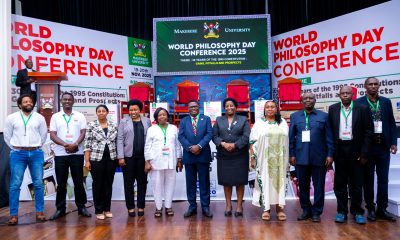

Hon. Mao Urges African States to Institutionalise Accountability in Governance
-
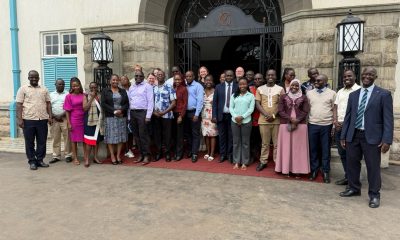

Strengthening Capacity and Shaping Policy: Makerere University Reviews Progress of MERIT and Environmental Risk Research Programs
-
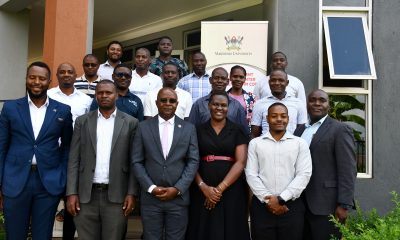

KCCA Officials Begin Two-Week Public Investment Management Training in Jinja

*****The project was officially launched on 28th October 2025, followed by planning meetings on 29th and 30th. It will be implemented at landing sites around Lakes Victoria, Kyoga and Albert.
Following the successful implementation of the NutriFish Project ( 2019-2023), Makerere University has been awarded a new grant worth about UGX2 Billion to expand activities and deepen community impact through the NutriFishPlus Project.
Funded by the International Development Research Centre (IDRC) and the Australian Centre for International Agricultural Research (ACIAR) under the Cultivate Africa’s Future Fund Phase II (CultiAF2), the NutriFishPlus Project seeks to enhance the incomes and livelihoods of fishing communities in Uganda.
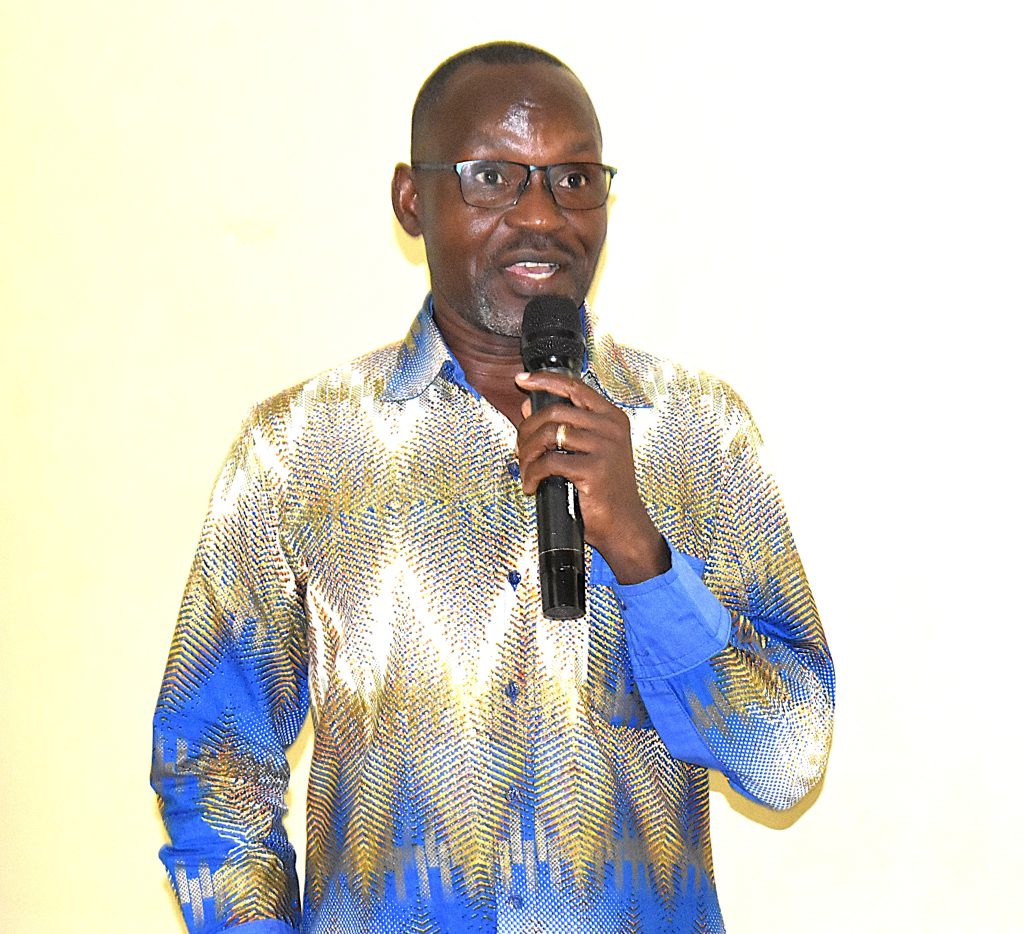
The project was officially launched on 28th October 2025 by the Ag. Deputy Vice Chancellor (Finance and Administration) at Makerere University, Prof. Winston Tumps Ireeta. Building on the achievements of phase one, NutriFishPlus will focus on:
- Scaling up the use of improved and sustainable fishing technologies, including solar tent driers and raised racks, to reach new communities across Uganda.
- Enhancing market access and strengthening supply chain linkages for high-quality fish and fish-based products.
- Empowering women and other vulnerable groups and strengthening community resilience through diversified income-generating activities.
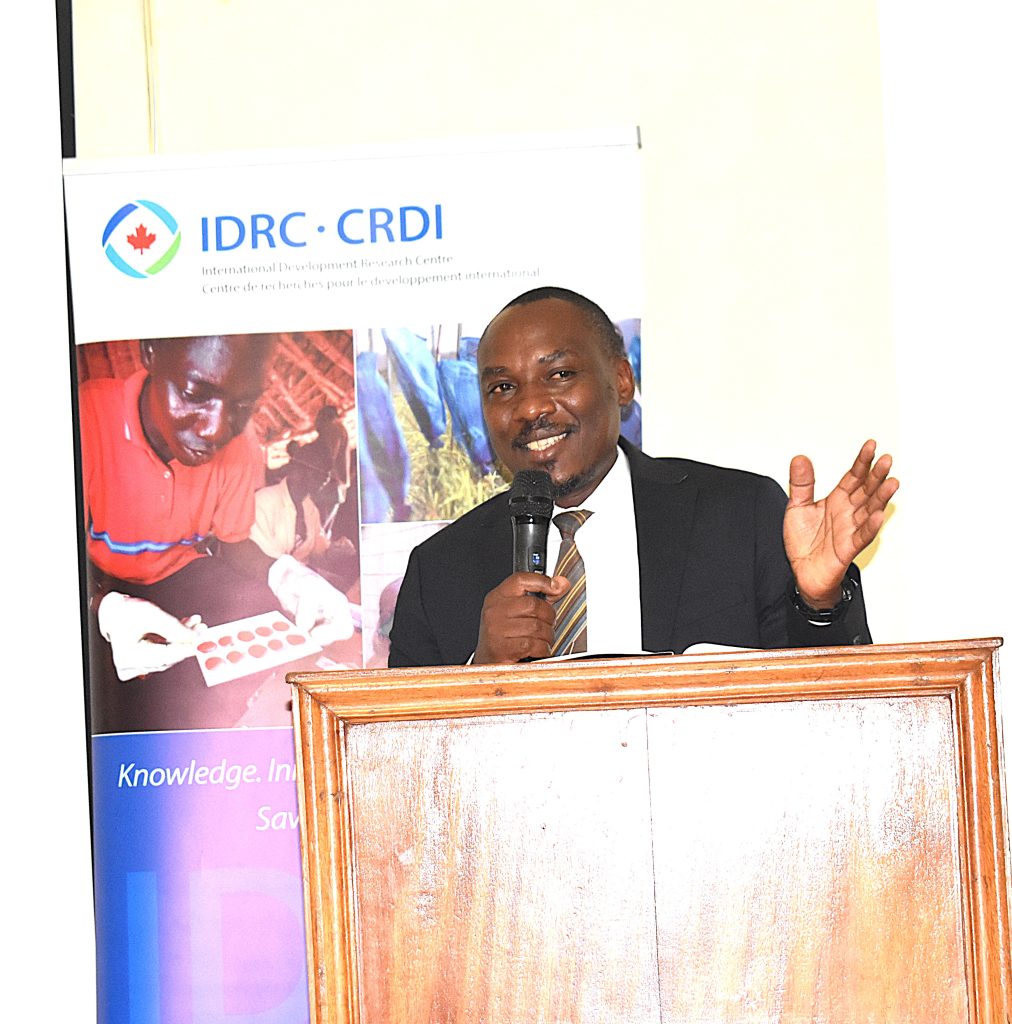
The project is expected to deliver the following outcomes:
- Improved incomes and livelihoods for the marginalized fishing groups, particularly women and youth.
- Better health and nutrition outcomes through the development of diversified, market-embedded fish products.
- Establishment of sustainable fish processing and marketing models that can be replicated across Uganda and the East African region.
- Improved participation of women and youth in decision-making and benefit-sharing within the Small Pelagic Fishes (SPFs) value chain.
- Enhanced socioeconomic conditions and ecosystem health through participatory and scalable approaches.
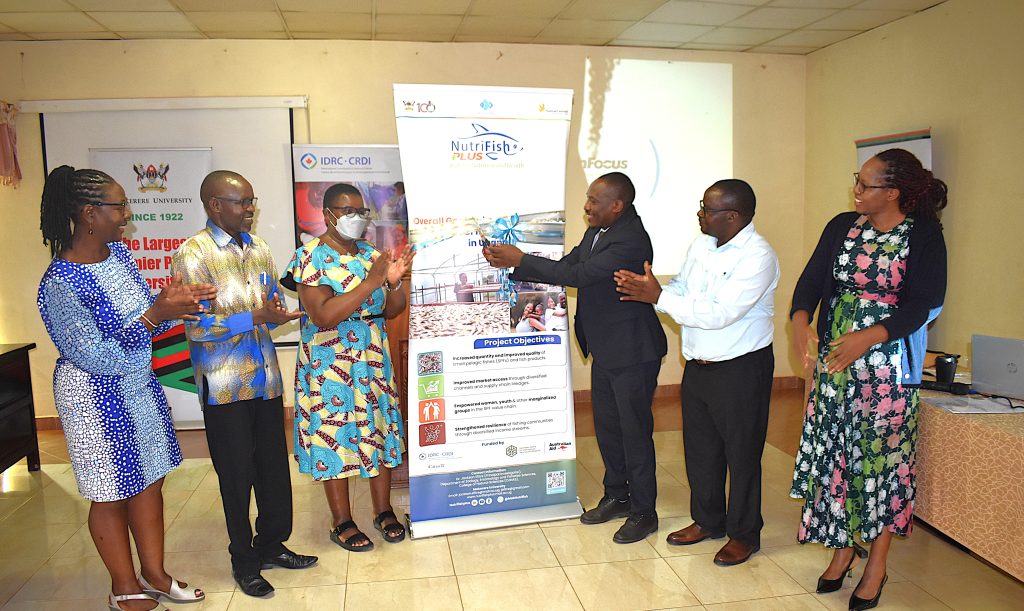
The project will run from September 2025 to March 2028 and will be implemented by the Department of Zoology, Entomology, and Fisheries Sciences at Makerere University, in collaboration with two private companies (Nutreal Ltd and Kati Farms Ltd) under a public-private partnership. Project activities will be carried out at five landing sites around Lakes Victoria, Kyoga and Albert. These include Katosi and Kikondo landing sites in Mukono and Buikwe districts respectively, Bangaladesh and Kayago landing sites in Amolatar District, and Dei landing site in Pakwach District. The project will be coordinated by Dr Jackson Efitre, Senior Lecturer at the Department of Zoology, Entomology, and Fisheries Sciences at Makerere.
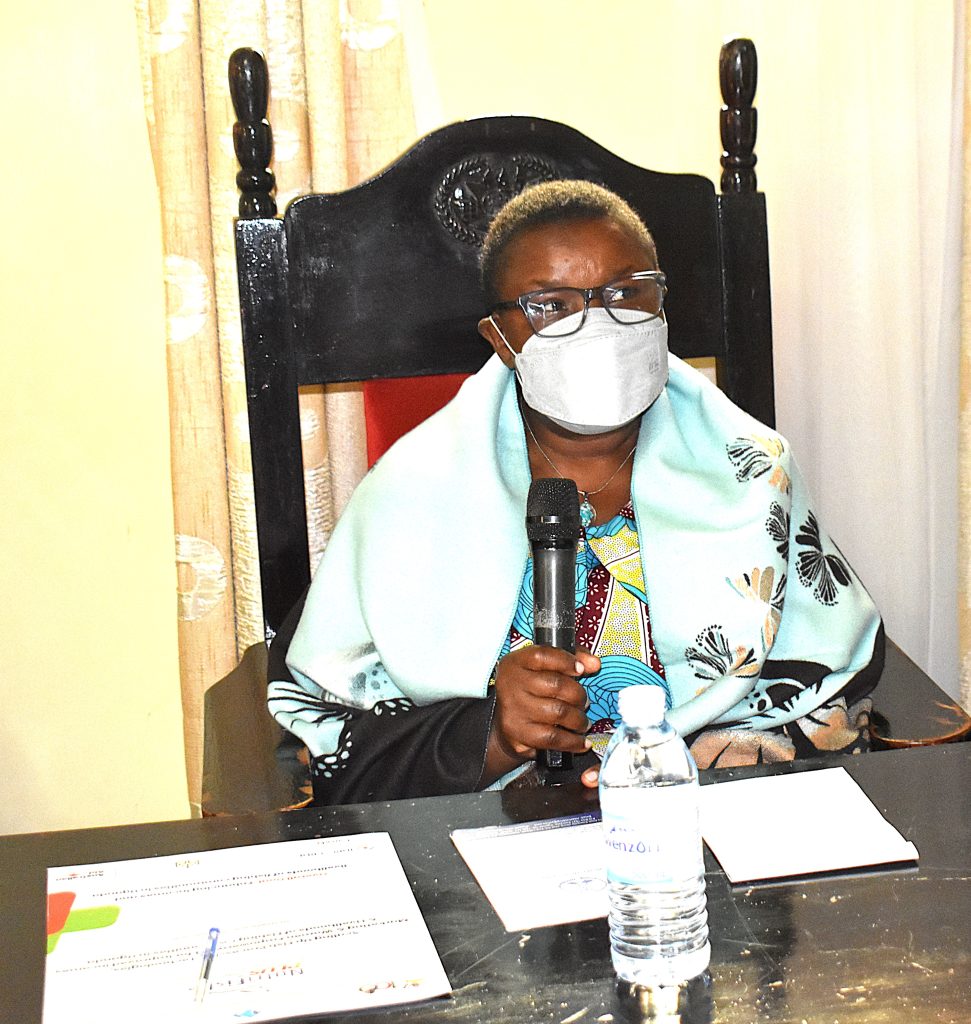
Inception and planning meetings
The NutriFishPlus Project team convened a three-day stakeholder engagement from 28th to 30th October 2025 to officially launch the project and collaboratively develop an implementation plan.
The workshop brought together a wide range of participants, including government representatives, researchers, private sector actors, and development partners. The primary objective was to foster a shared understanding of the project’s overarching goals, and design strategic pathways for achieving sustainable scaling and impact.
Discussions focused on deepening understanding of the scaling journey, and the interconnections among the different work packages and their respective pathways to scale. Participants explored how adaptive and transformative approaches can be integrated into the project’s dynamic monitoring, evaluation and learning (MEL) framework.
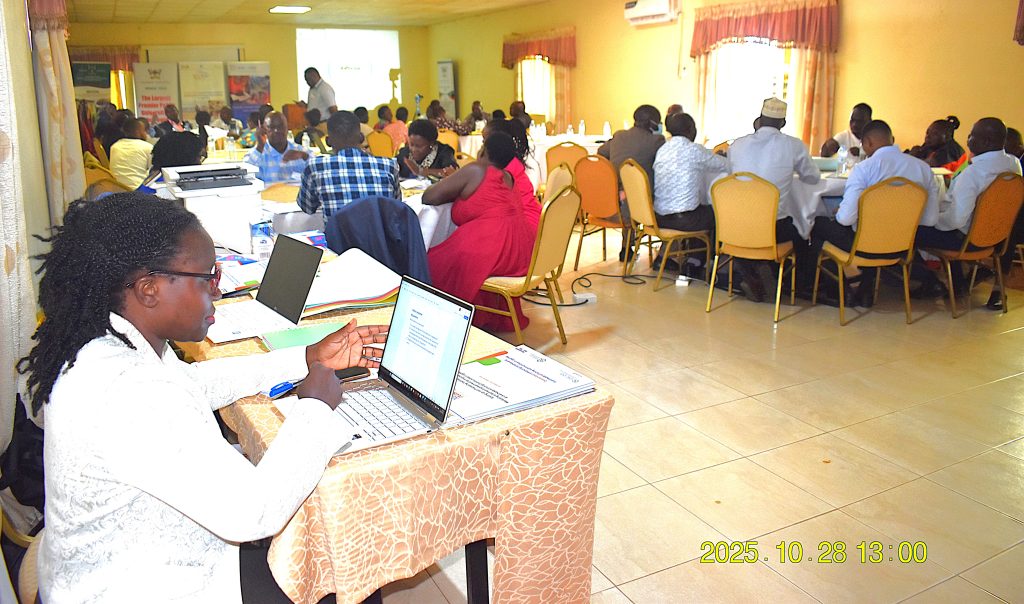
The team also reviewed the existing outputs and outcomes to identify key evidence that can inform adaptive monitoring. Through collaborative dialogue, stakeholders worked to identify appropriate indicators and progress markers that reflect the project’s adaptive learning and scaling dimensions, ensuring alignment with both the project objectives and national development priorities.

A major outcome of the workshop was the joint development of a detailed implementation plan for the project’s four interlinked work packages, which aim to:
- Enhance nutrition and health outcomes among vulnerable groups through the diversification of fish products and market innovations;
- Promote alternative and resilient livelihoods within small-scale fisheries and related value chains;
- Advance inclusivity and participation of marginalized groups, particularly women and youth in the Small Pelagic Fishes value chain through policy reform, advocacy, and enforcement; and
- Strengthen fish processing technologies and post-harvest management practices to improve food safety, quality, and value addition.
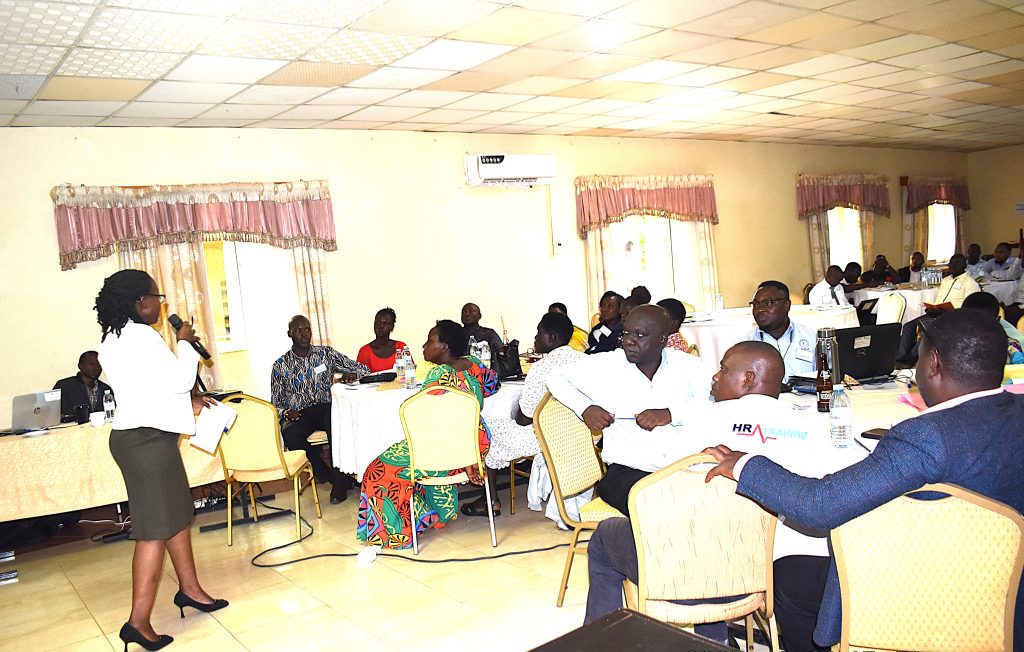
Overall, the inception workshop provided a strong foundation for coordinated implementation of the project, and established a clear roadmap for achieving the NutriFishPlus vision of improving nutrition, livelihoods, and sustainability through fisheries-based innovations.
Remarks by the University officials and development partners
Addressing the participants, the Guest of Honour, Prof. Winston Tumps Ireeta, Deputy Vice Chancellor in charge of Finance and Administration at Makerere University, commended the project team for the achievement. He also expressed gratitude to the project funders – the International Development Research Centre (IDRC) and the Australian Centre for International Agricultural Research (ACIAR) – for their steadfast support and dedication to improving the livelihoods of fishing communities in Uganda. “The NutriFishPlus project highlights Makerere University’s commitment to being a research-driven institution,” he said. “It also strengthens the University’s leadership in translating research into tangible, real-world outcomes that drive sustainable development and enhance public health.” On behalf of Makerere University Management, Prof. Ireeta assured continued support for the successful implementation of the project.
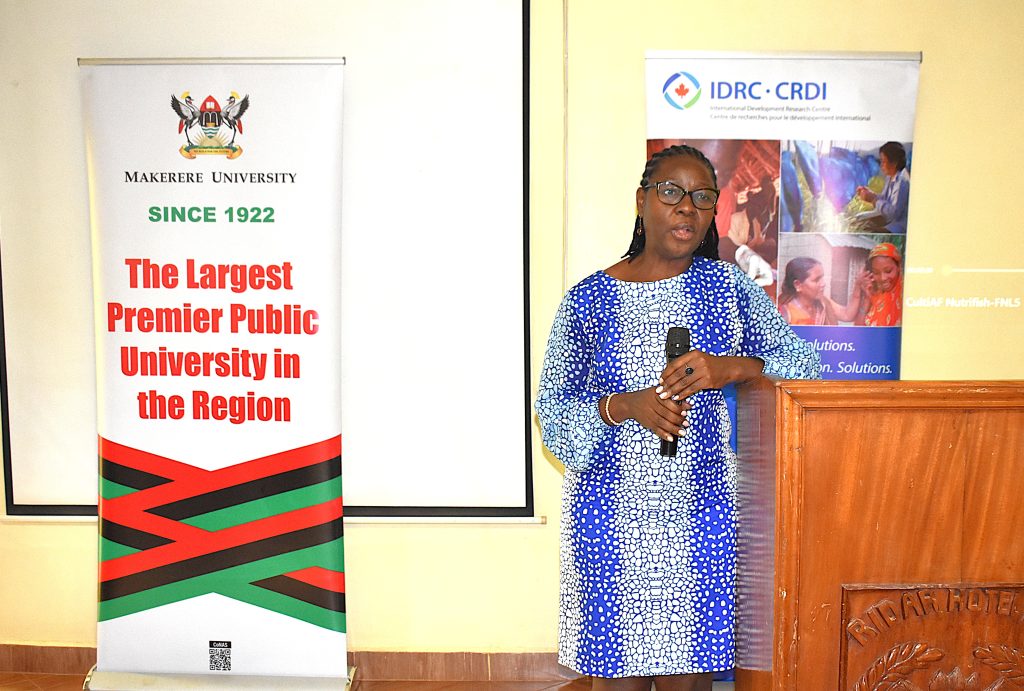
Dr. Edidah Lubega Ampaire, Senior Programme Specialist at the International Development Research Centre (IDRC), congratulated the project team upon securing the second grant. She emphasized that the IDRC is committed to supporting applied research that delivers tangible benefits to communities, noting that the team had demonstrated this through their success with the NutriFish project. “The IDRC invests in research that has the potential to transform livelihoods,” Dr. Ampaire said. “We look forward to seeing how the NutriFishPlus Project will build upon the achievements of the previous phase to scale up impact beyond the pilot phase. It is equally important that the project contributes to fostering meaningful policy reforms and strengthening enforcement mechanisms to ensure long-term, sustainable outcomes.”
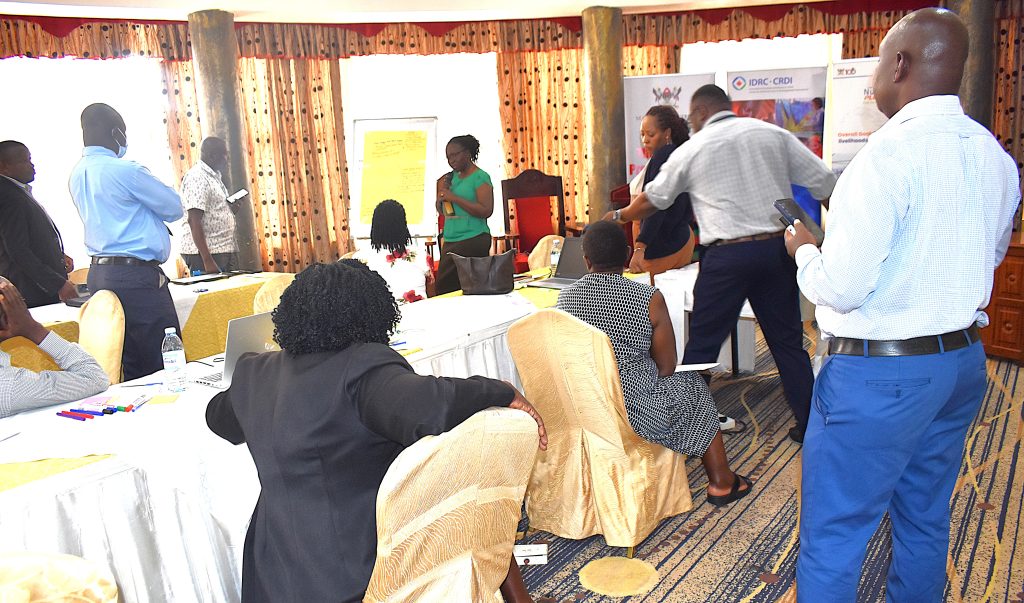
During the session, Ms. Dena Lomofsky, an experienced researcher and MEL expert, guided participants through the key components of scaling science. Her presentation explored the theoretical foundations, guiding principles, and strategic approaches required to transform research findings into scalable and sustainable solutions.
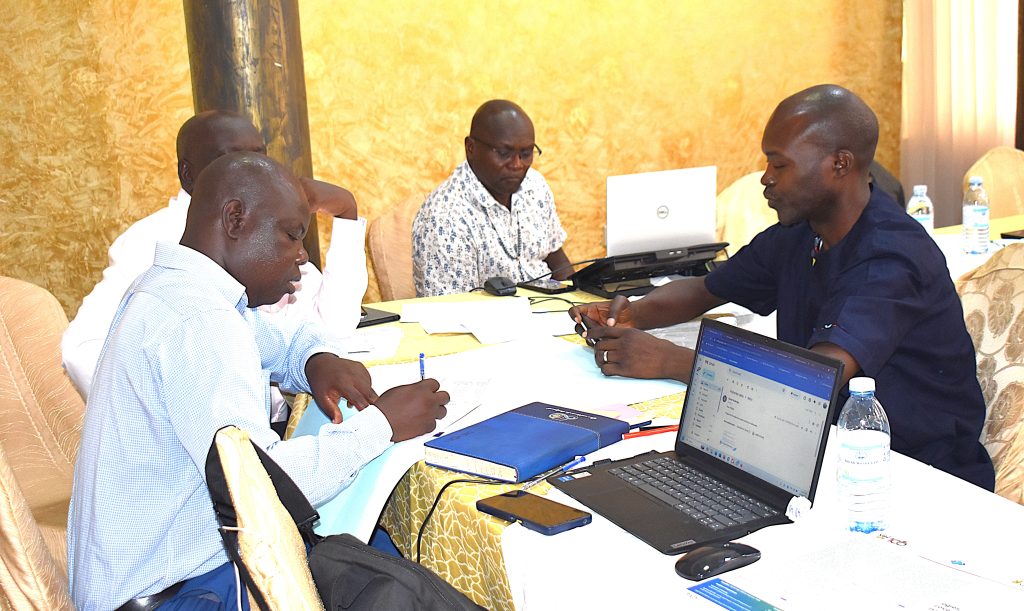
Briefing participants on their activities, Dr. Dorothy Nakimbugwe from Nutreal Ltd, a private company collaborating with the NutriFishPlus Project, underscored the crucial role of private sector involvement in research initiatives. She emphasized that engaging private enterprises not only enhances the practical application of research outcomes but also plays a pivotal role in scaling innovations and maximizing their impact.

Ms. Lovin Kobusingye of Kati Farms Ltd expressed gratitude to the project team and funders for the initiative. “At Kati Farms, we are truly honored to be part of this journey. Our passion has always been to transform Uganda’s fisheries sector through value addition, innovation, and inclusive growth. The NutriFishPlus Project aligns perfectly with this mission, as it aims to improve the incomes and livelihoods of fishing communities through diverse interventions. As Kati Farms, our commitment is to ensure that the products developed under this project meet the highest quality standards and reach both local and international markets. Together, as partners, let us move forward with a shared vision, to make NutriFishPlus not just a research project, but a transformative movement that uplifts fishing communities, enhances nutrition, and promotes gender equality within and beyond our borders.”

Mr. Isaac Kirabira from the Ministry of Agriculture, Animal Industry, and Fisheries expressed the Ministry’s commitment to supporting the project, emphasizing that empowering women, youth, and other vulnerable groups is essential not only for improving livelihoods but also for restoring dignity.
In his remarks, Dr. Godfrey Kawooya Kubiriza, Head of the Department of Zoology, Entomology, and Fisheries Sciences at Makerere University, equally appreciated the project team and the funders. “Our Department is proud to contribute to the NutriFishPlus Project. Initiatives of this nature provide a valuable platform for translating our research into practical solutions that reach communities, thereby creating meaningful and tangible impact.”
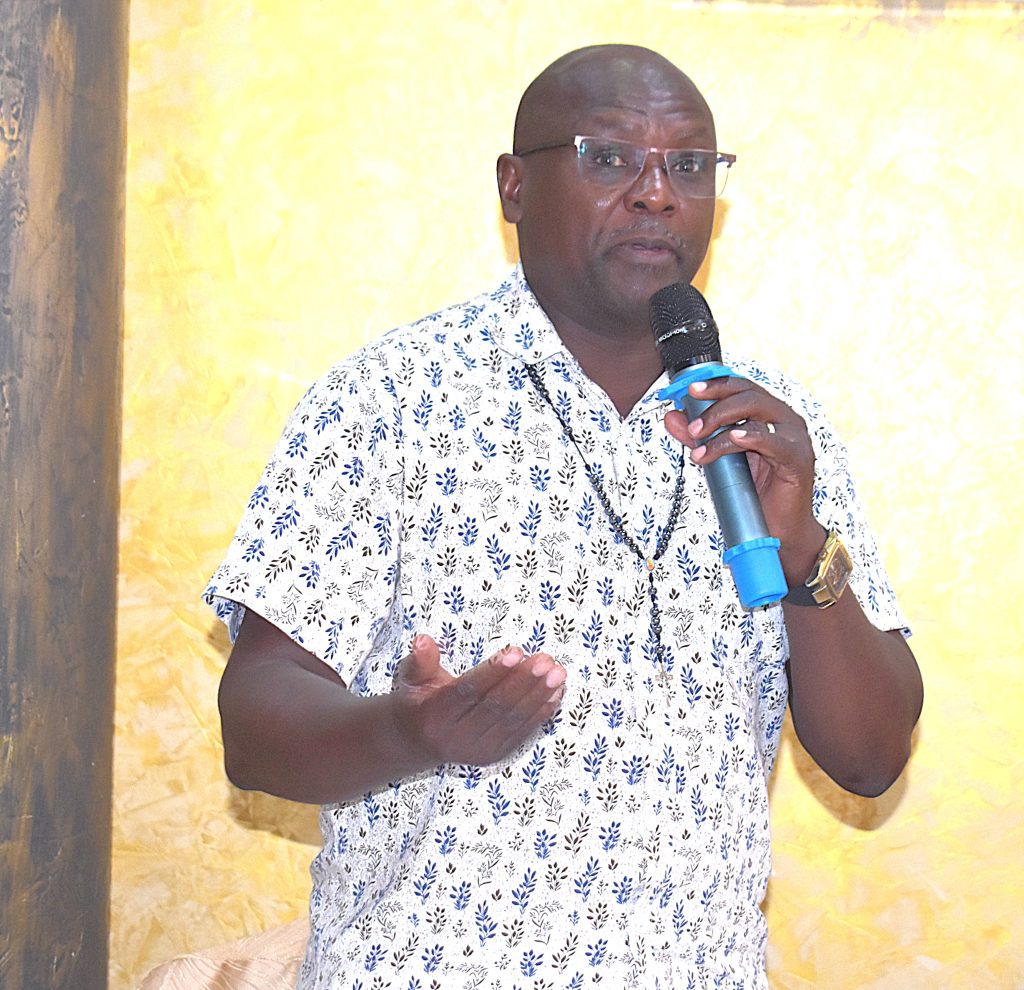
Achievements registered during Phase One
The achievements included:
- Establishing group savings schemes to improve access to capital by women and youth;
- Piloting solar tent dryers for processing silver fish (mukene), resulting in doubling of women’s incomes and tripling of the shelf-life to almost five months;
- Developing and test-marketing certified, nutrient-enriched fish products, including baby food, sauce and fortified maize meal;
- Conducting comprehensive social and behavioural change interventions, leading to increased women’s participation in profitable ventures and 30% reduction in domestic violence in intervention areas.
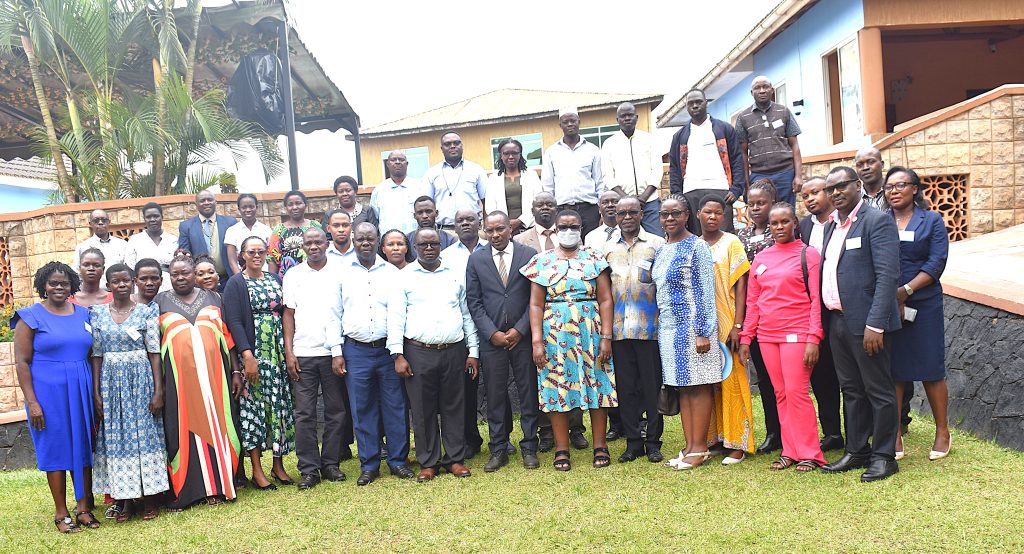
Link to the workshop pictorial: https://drive.google.com/drive/folders/1Wwd9kSsKpd6aZ6YrFL1uVveh2BSG36cV?usp=sharing
Natural Sciences
Mak-CoNAS Wins CAD 0.8 Million Grant to Scale-up Fish Processing Technologies & Empower Women in Uganda
Published
4 weeks agoon
October 27, 2025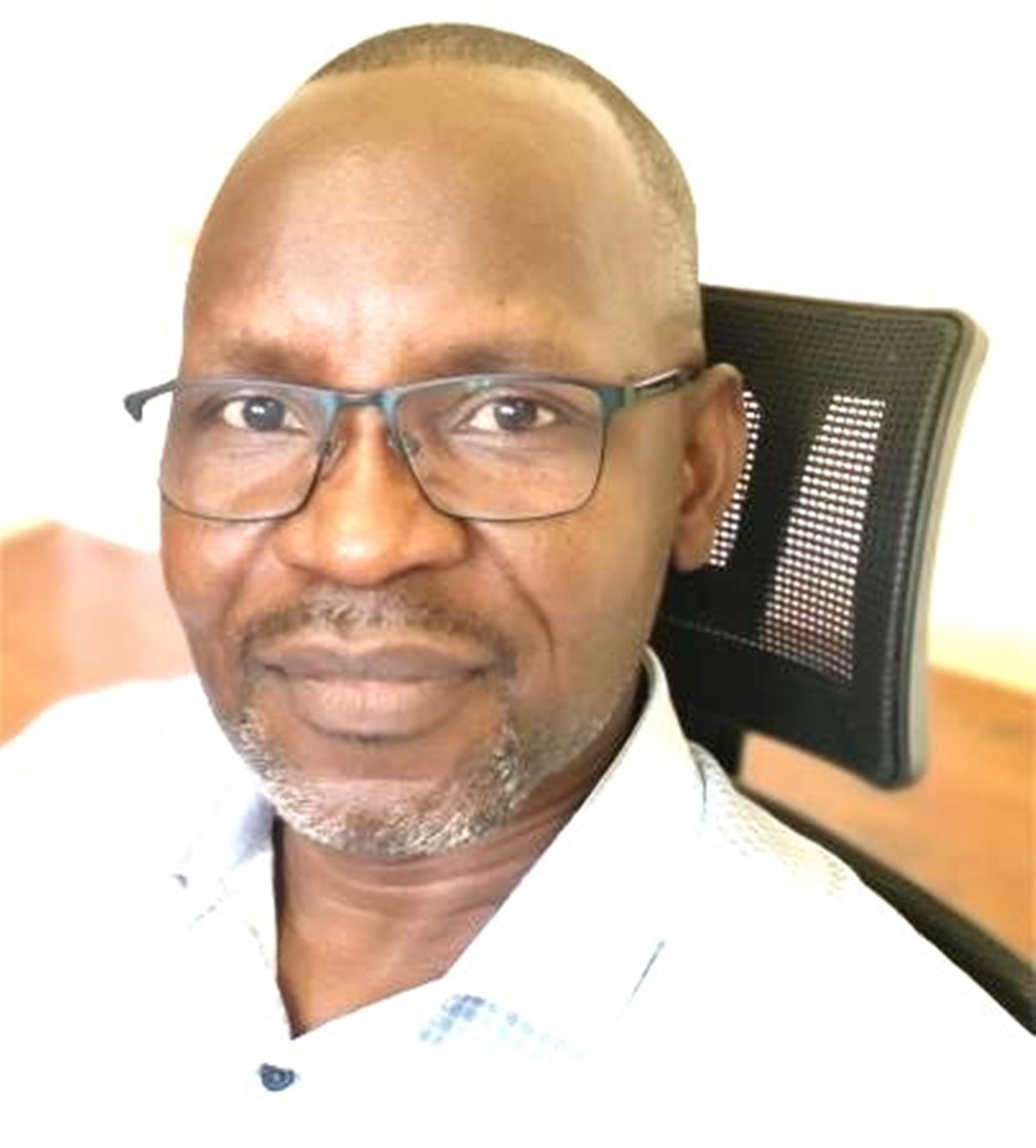
The College of Natural Sciences (CoNAS) at Makerere University has been awarded a highly competitive research grant worth CAD 0.8 million to implement the “NutriFishPLUS” project, which aims to scale up innovative fish processing technologies, improve market access, and empower women in Uganda’s fishing communities to boost incomes and livelihoods.
This project builds on the significant achievements of the previous ground-breaking NutriFish project (2019–2023), funded by the International Development Research Centre (IDRC) and the Australian Centre for International Agricultural Research (ACIAR) through the Cultivate Africa’s Future Fund Phase (CultiAF2). The achievements included: 1) establishing group savings schemes to improve access to capital by women and youth; 2) piloting solar tent dryers for processing silverfish (mukene), resulting in doubling of women’s incomes and tripling of the shelf-life to almost five months; 3) developing and test-marketing certified, nutrient enriched fish products, including baby food, sauce and fortified maize meal; 4) conducting comprehensive social and behavioural change interventions, leading to increased women’s participation in profitable ventures and 30% reduction in domestic violence in intervention areas. Despite these achievements, gaps still remain with regard to increasing production of high-quality Small Pelagic Fishes (SPFs) through adoption of solar tent dryers and raised drying racks; enhancing capacity of men, women and the youth in processing, packaging, branding and marketing; improving access to capital and lucrative markets for fish and fish products; and empowering women, youth and other marginalized groups in the small fish value chain; and strengthening resilience of fishing communities through diversified income streams.
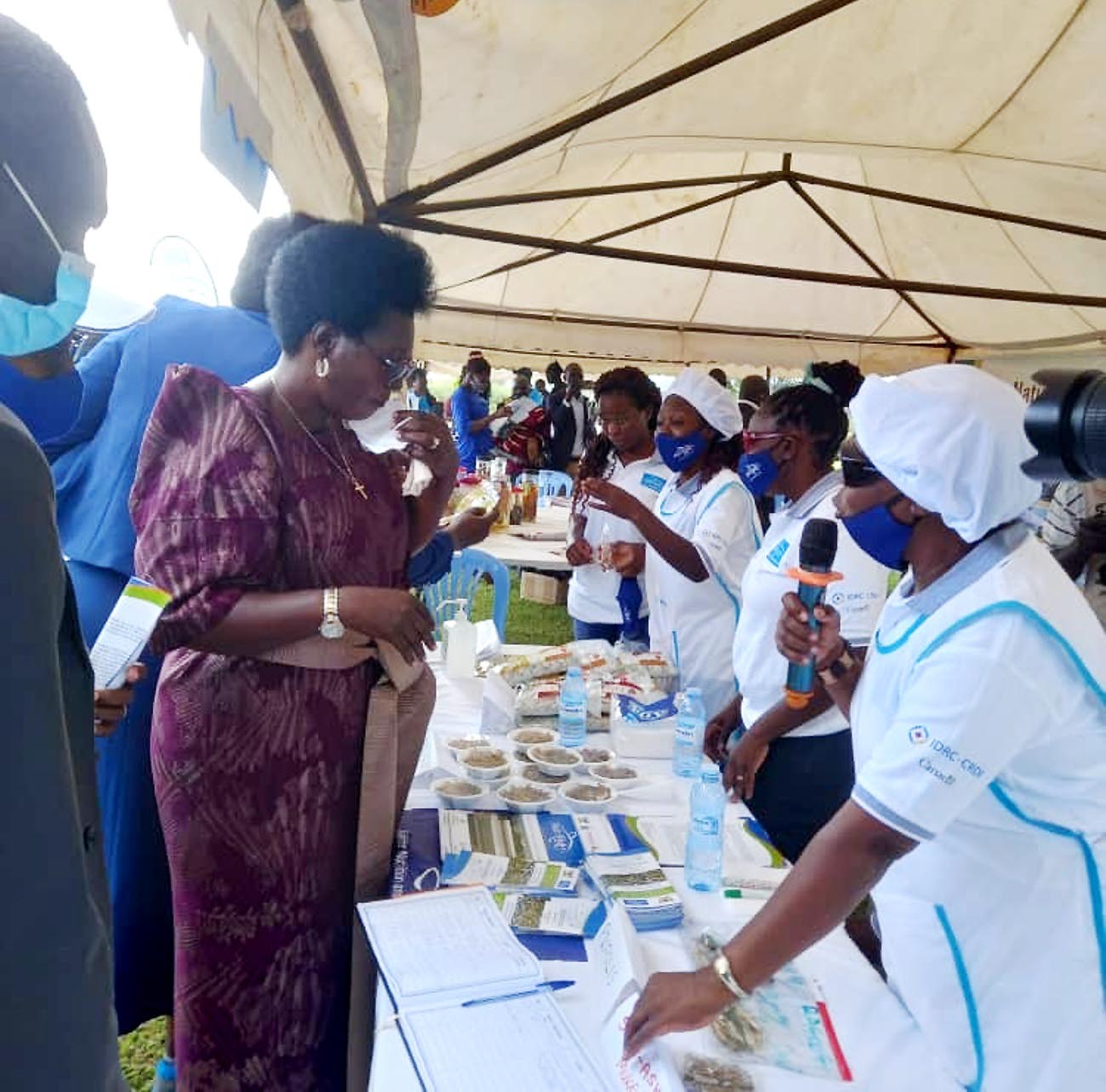
NutriFishPLUS will be implemented by the Department of Zoology, Entomology and Fisheries Sciences, CoNAS, in collaboration with two private companies (Kati Farms and Nutreal) through a public-private partnership. The Principal Investigator is Dr. Jackson Efitre and his team will focus on scaling-up the use of improved, sustainable fish processing technologies such as the solar Tent dryers and raised racks to new communities across Uganda; enhancing market access and supply chain linkages for high-quality fish and fish products; as well as deepening women’s empowerment and strengthening the resilience of fishing communities through diversified income streams. The project is expected to run for September 2025- March 2028. The expected outcomes include: enhanced incomes and livelihoods for marginalized fishing groups, particularly women and youth; improved health and nutrition for vulnerable groups through diversification of fish products that are embedded in the market with strong supply chain linkages; sustainable fish processing and marketing models that can be scaled across Uganda and the East African region; improved women and youth participation in decision making and control of benefits in the SPF value chains; and improved socioeconomic conditions and ecosystem health through participatory, scalable approaches.
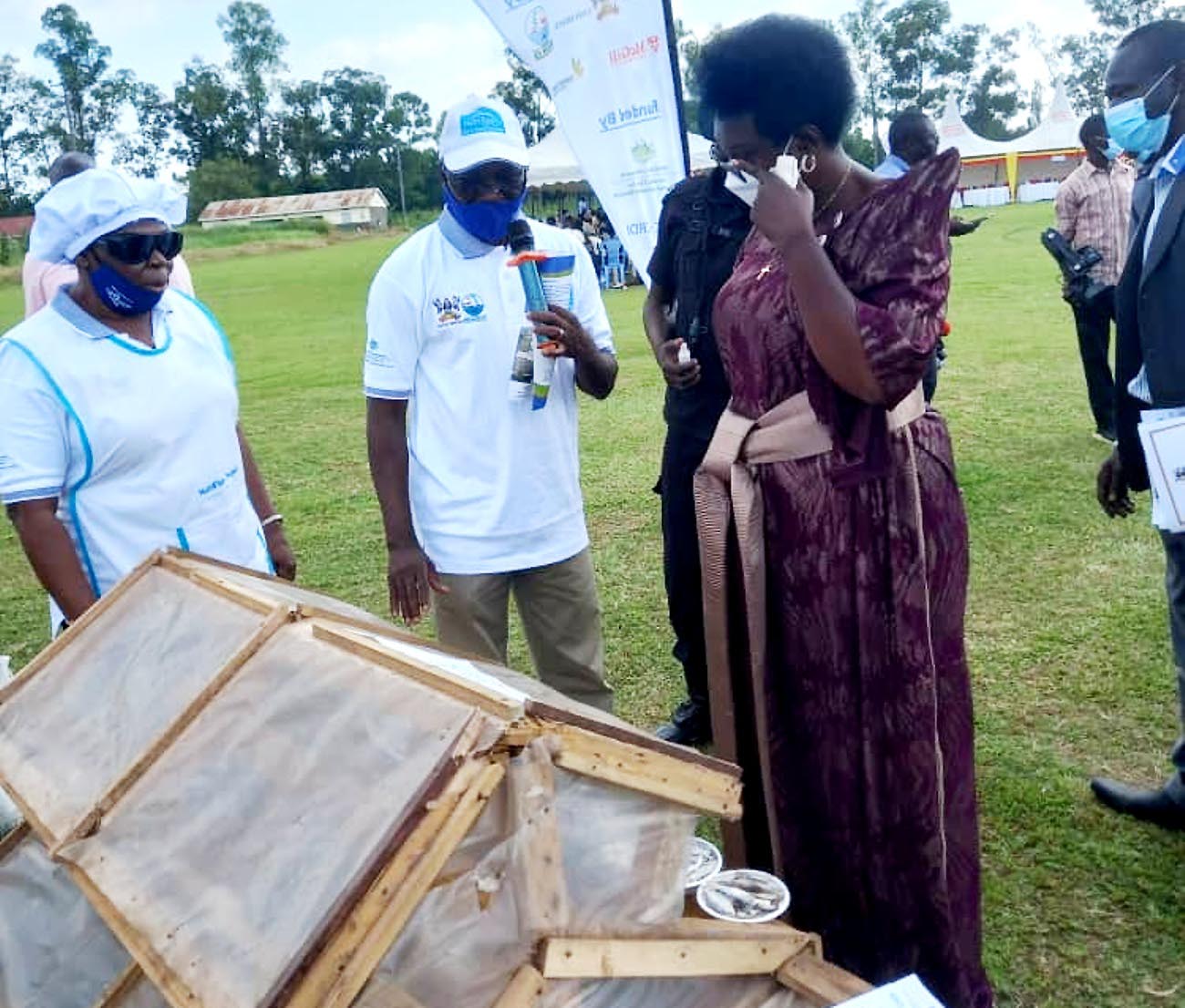
“Winning this competitive grant is an incredible opportunity for the team to solidify the achievements of the first phase as the funding enables us to move beyond research to embed these nutritional and technological solutions into the livelihoods of local communities,” said Dr. Efitre. “I am privileged to lead this impactful work on behalf of Makerere University. Scaling up these tested, climate-responsive technologies as well as empowering the women and youth will secure better nutrition and more sustainable livelihoods across fishing communities in Uganda.”
The project is set to be launched tomorrow, Tuesday, 28th October 2025 by the Acting Deputy Vice Chancellor, Finance and Administration and Principal, CoNAS, Prof. Winston Tumps Ireeta.
Please see below for details on the project.
Details on the previous project: https://news.mak.ac.ug/2023/03/nutrifish-project-registers-significant-achievements/
Agriculture & Environment
Ugandan Local Government Officials Trained on Environmental Valuation, Accounting, and Climate Resilience
Published
2 months agoon
September 22, 2025By
Jane Anyango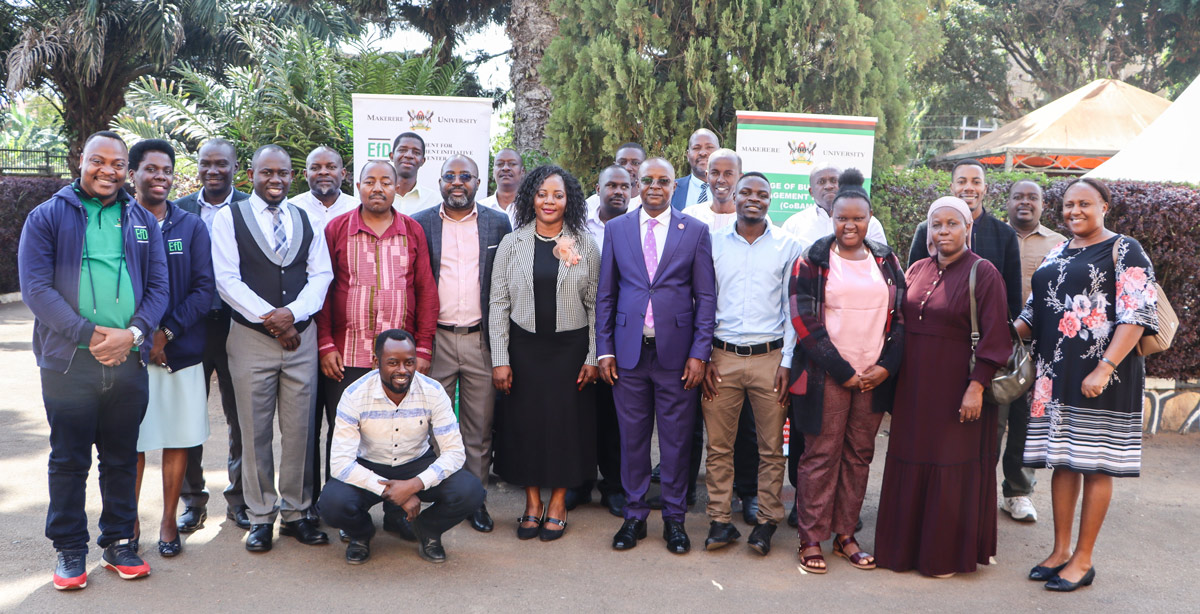
Entebbe, Uganda – September 19, 2025
More than 20 local government officials from Kampala Capital City Authority (KCCA), Entebbe Municipality, and the districts of Wakiso, Mukono, and Mpigi have concluded a two-day intensive training on Environmental Valuation, Accounting, Evaluation, and Climate Change Mitigation and Adaptation.
Held at Central Inn Hotel in Entebbe from September 18–19, the workshop was organized by the Environment for Development (EfD) Makerere University Centre and funded by the Makerere University Research and Innovation Fund (Mak-RIF). The objective was to build local capacity in environmental governance and integrate natural capital and climate risks into local development planning.
The training was facilitated by Dr. Aisha Nanyiti, Dr. John Sseruyange, Dr. Peter Babyenda and Dr. Nick Kilimani- all from Makerere University.
Natural Resources Must Be Valued and Protected
Opening the workshop, Prof. Edward Bbaale, Director of the EfD-Mak Centre and Principal Investigator of the project, described the training as timely, given Uganda’s growing environmental and climate challenges.
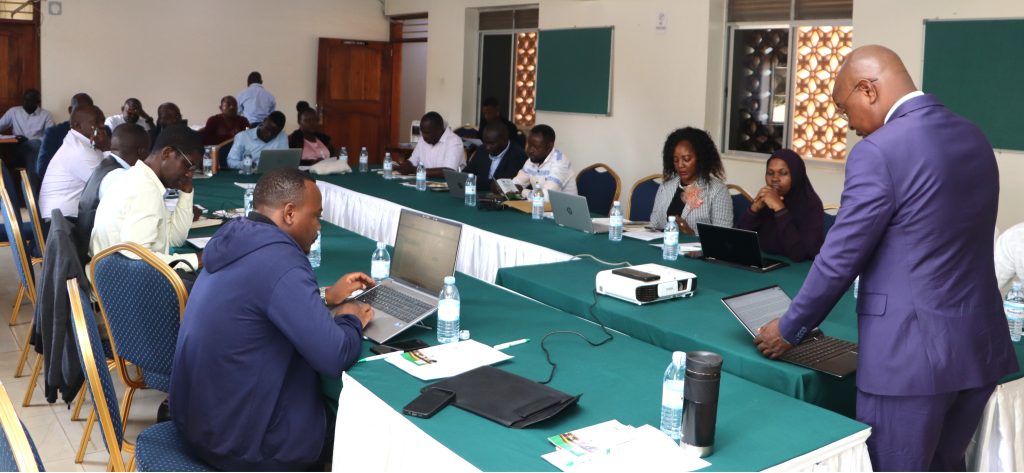
“Uganda is already experiencing the adverse effects of climate variability—on agriculture, health, water resources, and the economy,” Prof. Bbaale noted. “This training empowers our environmental officers to use economic evidence to defend natural resources against competing land uses.”
He emphasized the need to monetize ecosystem services like wetlands, forests, and biodiversity to inform land-use decisions.
“A forest cleared for sugarcane may appear to create jobs, but when you account for its carbon sequestration, rainfall formation, and tourism potential, its long-term value far outweighs the short-term economic gains.”
Prof. Bbaale also urged that natural capital be included in Uganda’s national accounting systems to achieve sustainable and equitable development.
He thanked local government leadership for releasing their staff for the training and praised the collaboration between academia and government.
“You are not just trainees — you are future champions of environmental stewardship in your districts,” he told the participants.
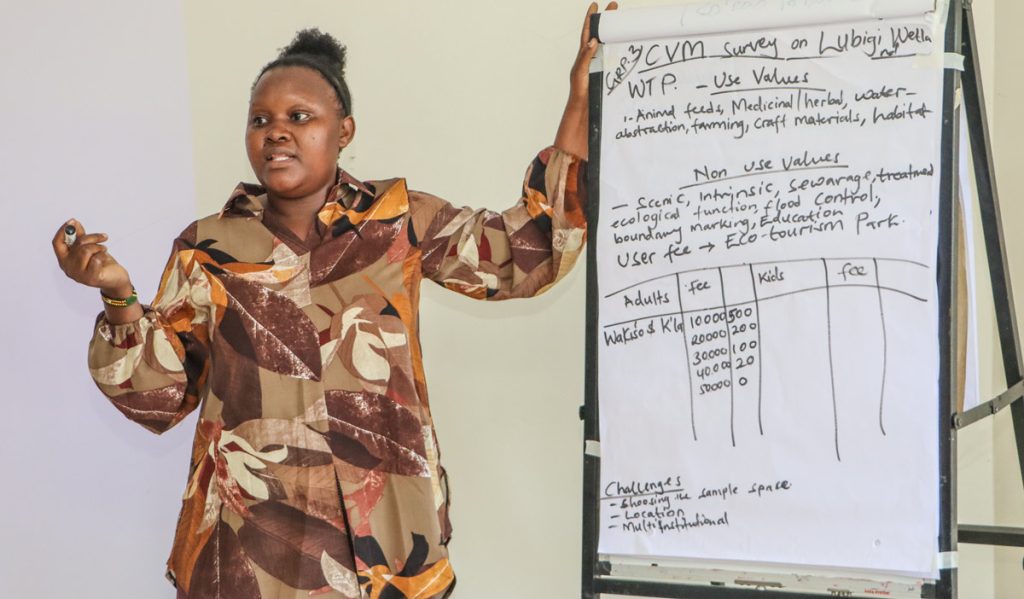
Environmental Degradation Threatens Public Health
Representing the Chairperson of Mak-RIF, Dr. Sabrina Kitaka underscored the public health consequences of environmental degradation, linking it to disease outbreaks and natural disasters.
“We have just seen a 14-year-old girl in Lwengo contract Crimean-Congo hemorrhagic fever due to increased human-wildlife contact — a direct result of environmental encroachment,” Dr. Kitaka warned.
She connected rising flash floods, deforestation, and urban sprawl to poor environmental management and called for cross-sectoral awareness of environmental risks.
“This training is not just for environmentalists. Planners, economists, and health professionals must also be equipped with this knowledge,” she said.
Dr. Kitaka applauded the EfD-Mak team for using local experts, not foreign consultants, in delivering the training.
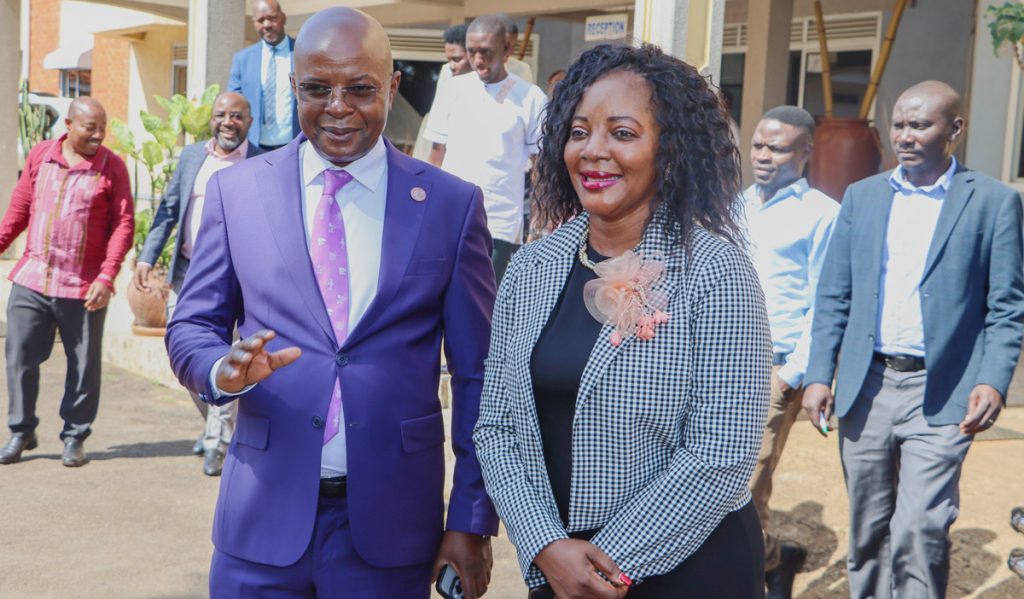
“We must train Ugandans to solve Uganda’s problems. That’s the spirit of Mak-RIF.”
She also revealed that the Government of Uganda has funded over 1,300 research projects through Mak-RIF over the last five years and called for continued investment in locally driven innovation.
“Like Oliver Twist, we ask for more. Science must be funded to help Ugandans solve Ugandan problems.”
Experts Present Practical Tools for Sustainable Planning
Localized Climate Action Is Urgent
Dr. Aisha Nanyiti urged participants to design district-specific climate policies, differentiating between mitigation (addressing the causes) and adaptation (responding to the impacts).
“Climate action begins at the local level. Districts must create context-appropriate bylaws and planning strategies to reduce vulnerability to floods, droughts, and other climate shocks.”
She emphasized that Uganda’s local governments are key to meeting national targets under NDP IV and Vision 2040, and that climate change must be addressed in all sectors — from health to urban planning.
Environmental Evaluation is a Safeguard
Dr. Sseruyange warned that development projects are at risk of failure if environmental assessments are not properly conducted.
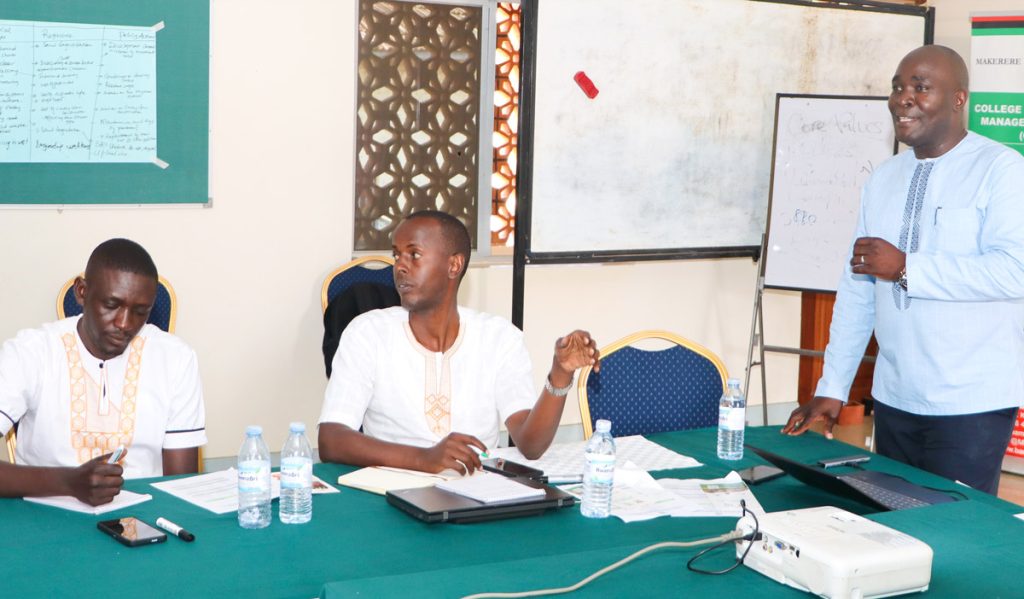
“Roads, schools, and hospitals may be destroyed by floods or landslides if we ignore the environment. Planning must consider both the impact on nature and the reverse impact from degraded ecosystems.”
He called on local environmental officers to assert their roles in safeguarding both the environment and infrastructure investment.
“Neglecting environmental oversight may undo everything we build.”
What is Not Valued is Easily Destroyed
Dr. Peter Babyenda introduced participants to valuation tools like Contingent Valuation Method (CVM) and the Travel Cost Method, which help quantify the economic value of forests, wetlands, and biodiversity.
“These tools inform cost–benefit analysis, budgeting, and resource allocation. If we don’t value our natural assets, we risk losing them permanently.”
He stressed that environmental protection is not only an ecological issue, but also an economic, social, and political matter. He encouraged integration of valuation results into budgeting and planning under frameworks like the National Environment Act (2019).
Local Officials Call for Continued Engagement
Ibrahim Muwanguzi, Environmental Officer from Wakiso District, praised the training as a vital step toward mainstreaming environmental valuation into local and national development processes.
“Most government officials focus solely on economic returns, ignoring the critical but intangible value of natural resources,” he said.
He cited a recent case during Mpigi Expressway construction where a culturally significant tree sparked debate over its monetary value — from UGX 100,000 to UGX 100 million — due to lack of valuation standards.
“If services like flood control were quantified in shillings, it would help justify preservation of wetlands and forests,” he noted.
Muwanguzi also emphasized the need for environmental economists in government roles, urging stronger collaboration between academia and policy.
“We have graduates in natural resource economics. Let’s integrate them into our public service.”
Let This Not Be the Last
Tonny Mwidyeki, District Natural Resources Officer for Mpigi, delivered the vote of thanks on behalf of all trainees, emphasizing the long gap since the last such training.
“For many of us, it’s been years since we had a refresher like this. If we continue to have such sessions, we will serve our people and protect our environment better.”
He thanked the facilitators from Makerere University for the two-day sensitization and urged that such capacity-building workshops be held more regularly.
“From here, we go back not just informed, but ready to lead change.”
Time to Act is Now
Closing the training, Dr. Sseruyange, speaking on behalf of the EfD-Mak Director, reminded participants that environmental degradation has been decades in the making, and action must no longer be delayed.
“Development depends on the natural world. Let us act now — from our households to our districts — to reverse the damage and secure our future.”
He thanked the participants for their active engagement and promised continued collaboration between Makerere University, local governments, and national stakeholders to promote evidence-based environmental policy.
About EfD-Mak and Mak-RIF
The Environment for Development (EfD) Centre at Makerere University is part of a global network of research institutions focused on environmental economics, coordinated by the University of Gothenburg, Sweden.
The Makerere University Research and Innovation Fund (Mak-RIF) is a Government of Uganda-funded program supporting local research to address national development challenges. Since inception, Mak-RIF has supported over 1,300 research projects across disciplines.
Trending
-
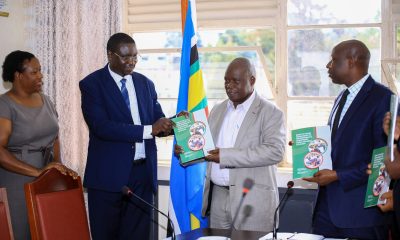
 Research1 week ago
Research1 week agoMakerere University and Ministry of Public Service Study Reveals Impact of Salary Enhancement on Teacher Performance in Uganda
-
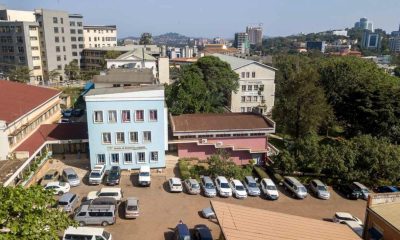
 General2 weeks ago
General2 weeks agoCall For Applications: Mak-BSSR Postdoc, PhD, Master’s Fellowship-level Training
-
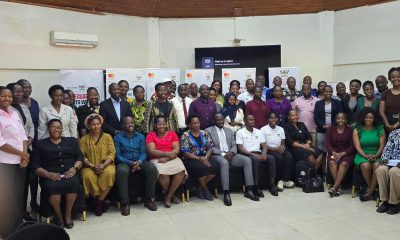
 General5 days ago
General5 days agoMakerere University officially commences implementation of its Mentorship Policy
-
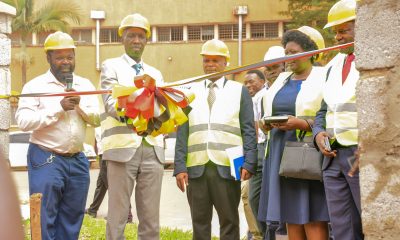
 Education1 week ago
Education1 week agoReal life project: Makerere University Vice Chancellor hands over constructed Wall Fence to Makerere College School
-

 Agriculture & Environment1 week ago
Agriculture & Environment1 week agoSFTNB-MIIC Partnership Nurtures Entrepreneurial Learners & Change Agents
